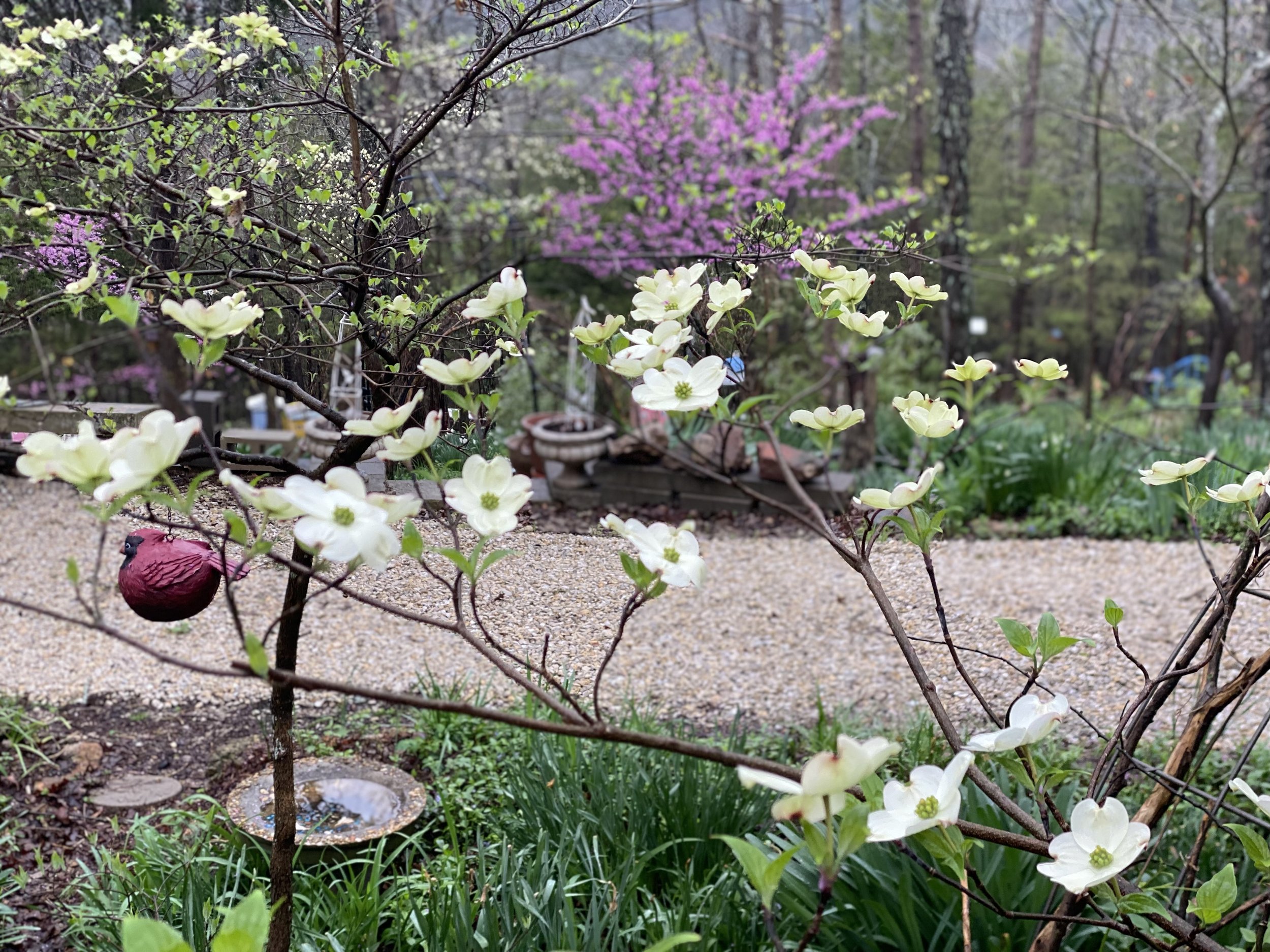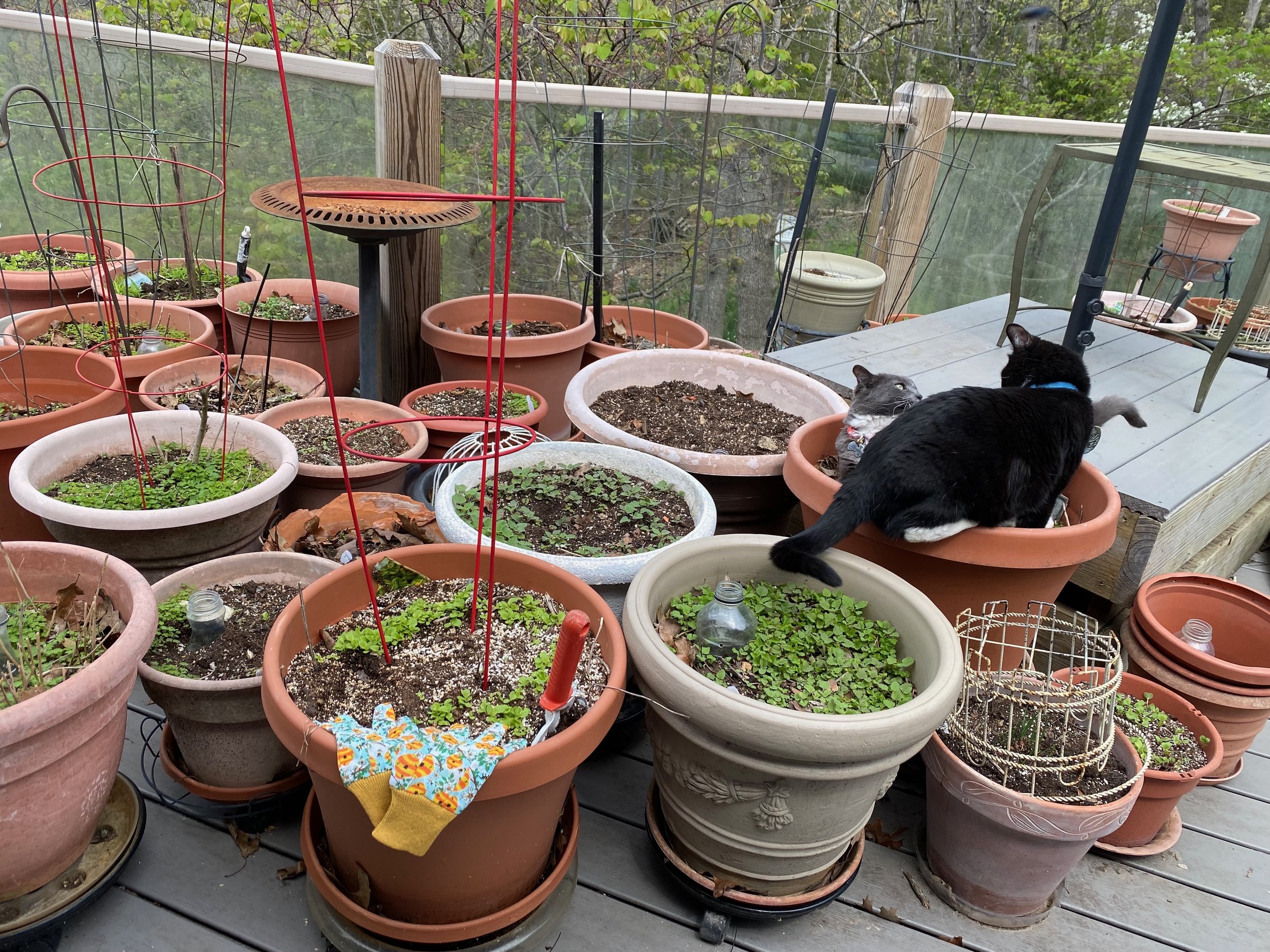Tomato Trouble
/This tomato is definitely in trouble for several reasons! (Photo by Charlotte Ekker Wiggins)
Tomato Trouble
Several readers are having trouble getting tomato seeds started this year and for good reason. Not only has it been record cold but we have jumped from winter to summer with little spring in between.
Tomatoes are very close to my heart. I wrote a speech in high school about tomatoes first name, “love apples.” They are actually fruits re-categorized as vegetables to work around a 19th Century import tax.
There are several factors that can cause trouble with tomatoes, starting with seedlings that die off. The condition is called “damping off” and covers several possible fungi that can kill off seedlings. Start again with brand new potting soil use a washed or new container. Add crushed egg shells in bottom before adding more soil to ward off blossom end rot, which is caused in the fruit by a calcium deficiency. Keep the pot in a window for warmth and away from drafts. Water with a spray bottle so you don’t over-water.
The second problem is flowers that drop. There are several reasons tomatoes drop their flowers, starting with the impact of record high temperatures. Tomatoes, like most flowering plants, go into survival mode if temperatures are above 90F for five or more days in a row.
Plant survival mode means most systems are shut down, including pollen production. It’s why a plant may seem to die in hot weather and yet reappear the following year. As long as the roots can pull through, most plants will survive.
Tied to temperature is high humidity. Humidity that is too high prevents pollen from sticking to the stigma once it is released. Without pollen, there are no pollinators and without pollinators, there are no flowers that produce tomatoes.
These cherry tomatoes grew over winter inside my house, the last of my winter crop. (Photo by Charlotte Ekker Wiggins)
In addition to weather conditions, tomatoes need pollinators such as native bumblebees. These little hoodlums of the bee world literally shake the tomato plant, releasing pollen all over the stigma and themselves. When high temperatures shut down pollen production, they also put bees out of business.
As they grow, make sure tomato plants don’t get too much nitrogen fertilizer. A balanced plant meal requires nitrogen for growth, phosphorous for moving energy through the plant, and potassium for stress tolerance. Our Ozark soil can provide nitrogen but the other two fertilizer elements usually need a boost.
The other delicate part of raising tomatoes is watering. Tomato roots in open ground can grow to 5 feet deep. Tomatoes even grown in containers prefer to be evenly moist so with temperatures, and humidity, either at record levels or varying widely, requires careful monitoring.
Plant herbs with your tomatoes. The herbs will help detract bugs. Basil is the number one herb for tomatoes, but other herbs compliment tomatoes as well: bay, chives, dill, marjoram, oregano, parsley, rosemary, savory, tarragon and thyme.
I have sunken plastic bottles with holes in pots keeping my tomatoes company so that I can better keep the roots moist. I also use a paint stick propped into the side and moved over an inch to check how wet the soil is before I water.
And that speech about tomatoes I gave in high school?
I got an A. I suspect it would have been an A+ if I had not eaten the display.
Charlotte













